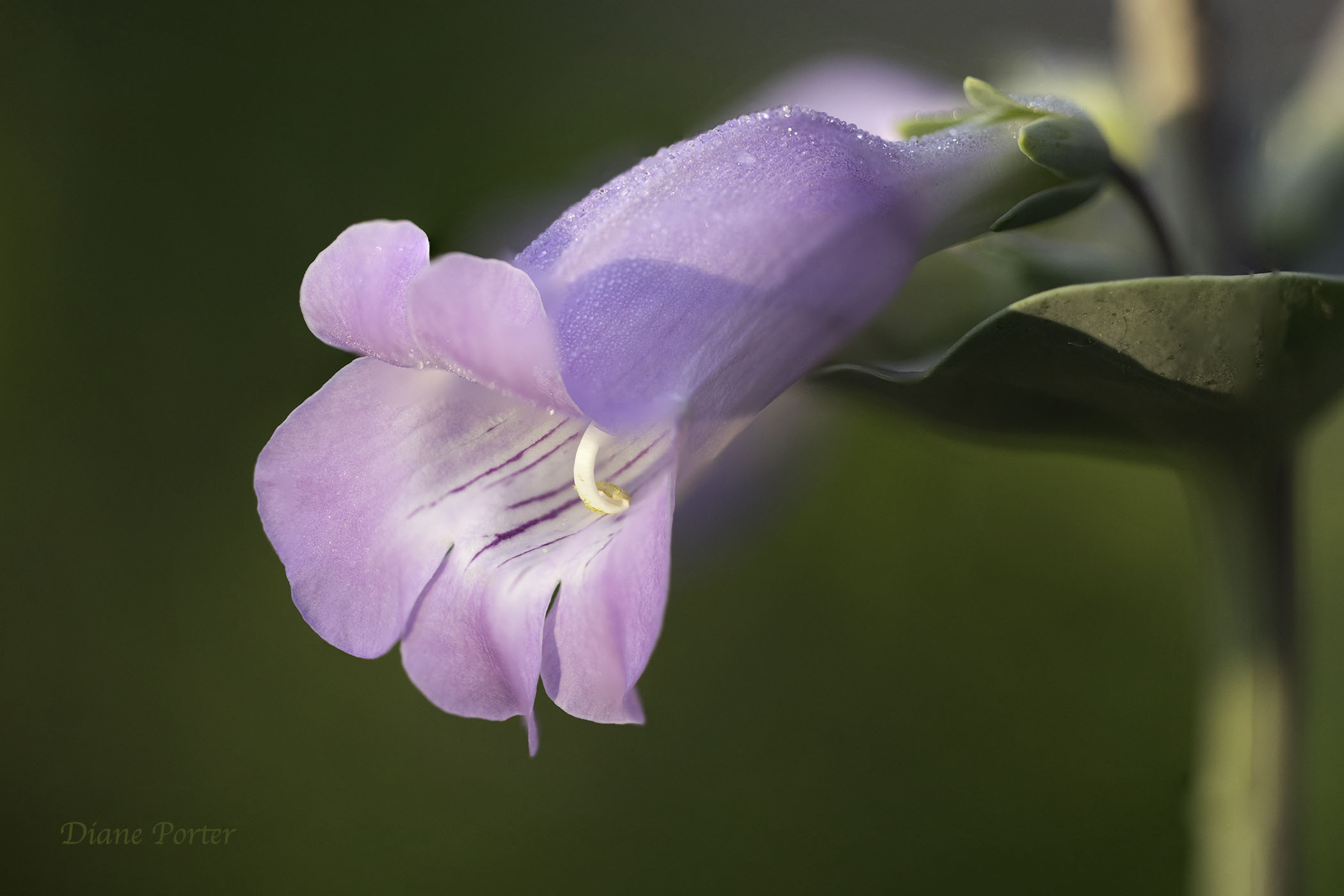Diane Porter of Fairfield first published this post on My Gaia, an email newsletter “about getting to know nature” and “giving her a helping hand in our own backyards.” Diane also maintains the Birdwatching Dot Com website and bird blog.
When I planted its seeds, I’d never met Large-flowered Beardtongue (Penstemon grandiflorus) in real life. All I knew was that it was a primeval wildflower. I wanted to see what it was like, once upon a time, back when this land was a tallgrass prairie.

My Large-flowered Beardtongues surprised me. Photos had not prepared me for the lavish spires of rose-purple blossoms that shot upward beside my front door.
The long flowers tilt slightly downward. I had to lean over and bend my neck to look up into them. Then I could appreciate the flower’s hollow shape and see the structures inside.
The stamens
Thin tubes rise from the back of the flower’s throat. They curve forward, pressing against the inside surface of the petals. They look as if they’re holding the blossom open, like a skeletal framework.
Dark, knobby anthers are visible only if you look upward into the flower:

Those tubes are the flower’s male structures, the stamens. The tip of each stamen is a knobby anther, where insects find the pollen they eat or feed to their young.
Anthers in hiding
Many flowers have brightly colored anthers, to entice pollinators to visit. However, Large-flowered Beardtongue’s anthers are not very colorful. What’s worse, they’re tucked up out of sight in the roof of the flower. An insect flying past might not even notice them.
If it really wanted to attract pollinators, you’d think this plant could make its anthers look a little fancier and more enticing.
It’s easier to see a special stamen in front:

Well, in fact the beardtongue does have a specialized stamen that seizes attention. It sticks itself forward toward the mouth of the flower, like a tongue. Its tip is fuzzy and gold, in vibrant contrast with the purplish petals.
The fancy but fake anther
A bumblebee, noticing the gold, lands on the lip of the flower. But it doesn’t find pollen there. It was all false advertising.

Still, once inside, the bee discovers nectar down in the depths of the flower. As it pushes its way in to suck the sweetness, it picks up actual pollen on its back and wings.
Pollination is accomplished. And the bee gets fed. The reward may not be the one it expected, but bees need both pollen and nectar. Maybe it forgives being tricked.
Microscope view of a staminode with its fake anther:

The stamen with the fake anther has a special name — staminode.
Real anthers get their color from grains of pollen. This fake anther is gold because of its special hairs, which under the microscope look something like autumn leaves. They attach firmly to the shaft of the staminode and do not brush off. Even if they did, the bee would find no nutrition in them.
Closer microscopic view of the staminode’s golden hairs:

Common name: Large-flowered Beardtongue
This plant is one of more than 250 species of closely related flowers in North America. They nearly all have the word “beardtongue” in their name, referring to the tongue-like staminode that characterizes this group. In many species, its tip looks fuzzy. You could even say bearded.
Large-flowered Beardtongue has a bigger blossom than almost any other beardtongue species (up to 2.5 inches long). So its name proclaims this as the “large-flowered” one among all the beardtongues.
Scientific name: Penstemon grandiflorus
- pente: Greek for “five”
- stemon: Greek for “stamen”
- grandis: Latin for “large”
- floris: Latin for “of the flower”
Hence Penstemon grandiflorus.

Nearly all of the 250+ species of Penstemon are native only to North America, mostly in the U.S. or Canada. (A very few have been found in Mexico or Guatemala.)
The Penstemon genus has more species than any other genus of North American flowering plants. It must be doing something right.


1 Comment
Nice photos and very interesting pollination story!
Thank you, Diane Porter! And yes, the Penstemon genus is definitely doing something right.
Unfortunately, doing things ecologically right is not enough to save native wildflowers these days. Below is the photo and story of a lovely Nebraska penstemon, formerly thought to be extinct, that still survives but is federally endangered. I was shown a small population many years ago when visiting the Sandhills. And now Trump’s minions are working hard to cripple if not kill the Endangered Species Act.
PrairieFan Thu 19 Jun 6:00 PM